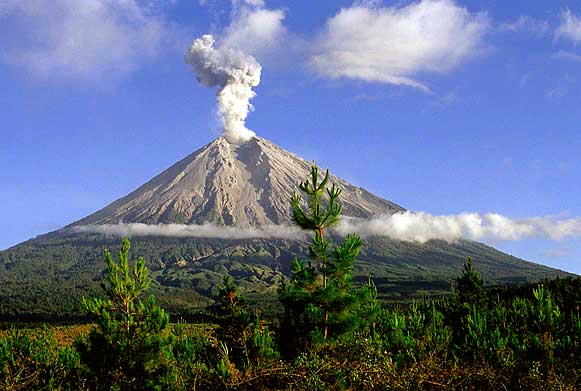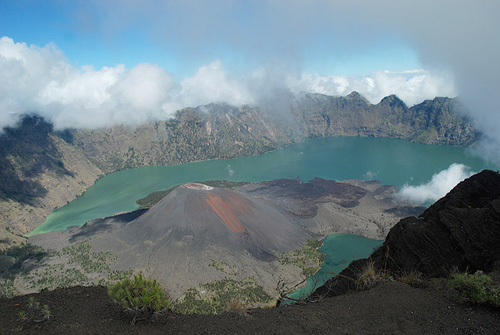Mount Semeru
Mount Semeru - Semeru also Gunung Semeru - is the tallest mountain on the island of Java and one of its most active volcanoes. Known also as Mahameru (Great Mountain), it is very steep and rises abruptly above the coastal plains of eastern Java. Semeru lies at the south end of the Tengger Volcanic Complex.






Semeru's eruptive history is extensive. Since 1818, at least 55 eruptions have been recorded (10 of which resulted in fatalities) consisting of both lava flows and pyroclastic flows. Moderate explosive eruptions (VEI 2-3) have also been recorded with some regularity.
Semeru has been in a state of near-constant eruption from 1967 to the present. At times, small eruptions happen every 10 minutes or so.
Semeru is regularly climbed by tourists, usually starting from the village of Rano Pani to the north, but though non-technical it can be dangerous. Soe Hok Gie, an Indonesian political activist of the 1960s died in 1969 from inhaling poisonous gas while hiking on Mount Semeru.
Semeru is named from Sumeru, the central world-mountain in Buddhist cosmology. In legend it was transplanted from India; the tale is recorded in the 16th-century East Javanese work Tantu Panggelaran.
It was originally placed in the western part of the island, but that caused the island to tip, so it was moved eastward. On that journey, parts kept coming off the lower rim, forming the mountains Lawu, Wilis, Kelud, Kawi, Arjuno and Welirang. The damage thus caused to the foot of the mountain caused it to shake, and the top came off and created Penanggungan as well.






Semeru's eruptive history is extensive. Since 1818, at least 55 eruptions have been recorded (10 of which resulted in fatalities) consisting of both lava flows and pyroclastic flows. Moderate explosive eruptions (VEI 2-3) have also been recorded with some regularity.
Semeru has been in a state of near-constant eruption from 1967 to the present. At times, small eruptions happen every 10 minutes or so.
Semeru is regularly climbed by tourists, usually starting from the village of Rano Pani to the north, but though non-technical it can be dangerous. Soe Hok Gie, an Indonesian political activist of the 1960s died in 1969 from inhaling poisonous gas while hiking on Mount Semeru.
Semeru is named from Sumeru, the central world-mountain in Buddhist cosmology. In legend it was transplanted from India; the tale is recorded in the 16th-century East Javanese work Tantu Panggelaran.
It was originally placed in the western part of the island, but that caused the island to tip, so it was moved eastward. On that journey, parts kept coming off the lower rim, forming the mountains Lawu, Wilis, Kelud, Kawi, Arjuno and Welirang. The damage thus caused to the foot of the mountain caused it to shake, and the top came off and created Penanggungan as well.
0 comments:
Post a Comment